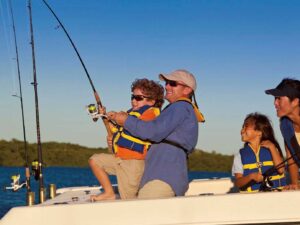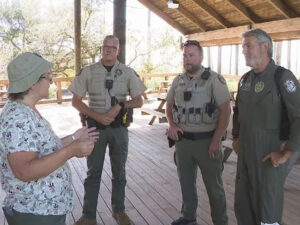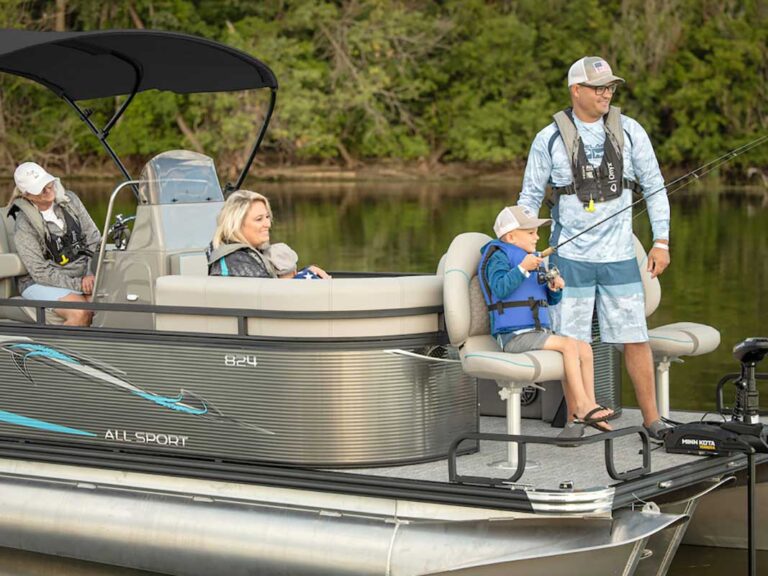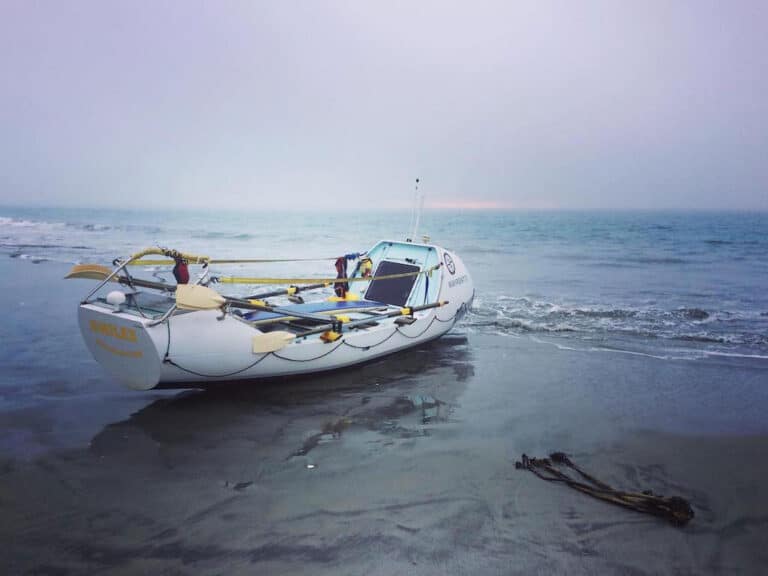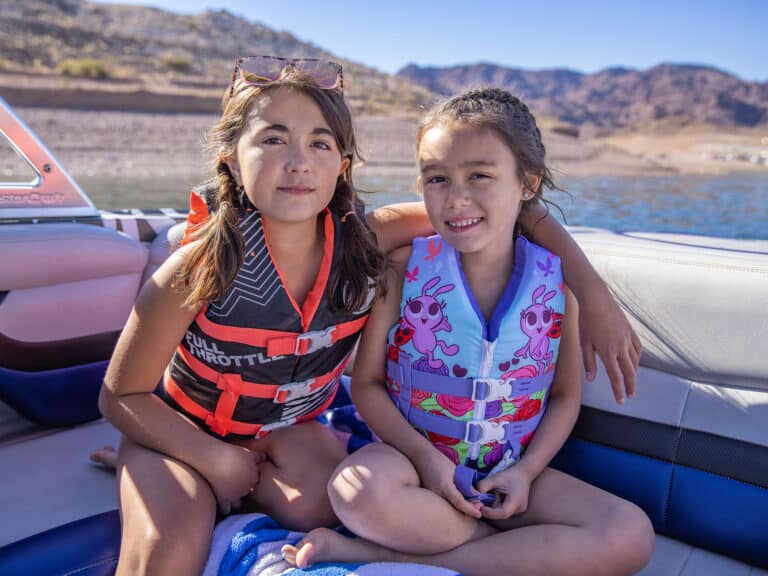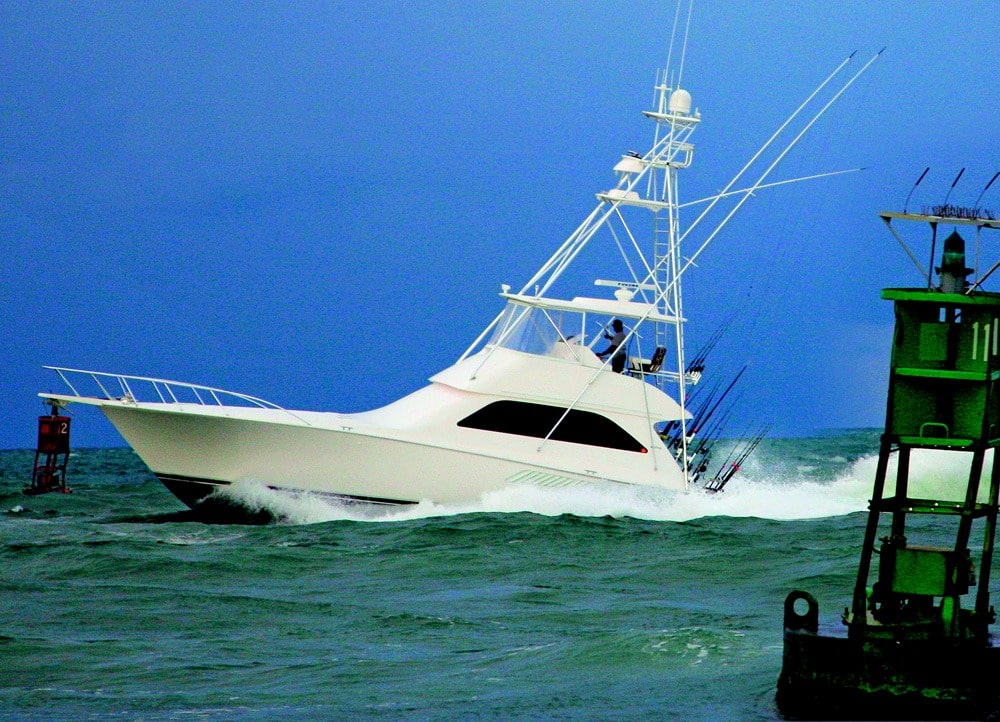
You’ve intended to sign up for the United States Power Squadrons safe-boating course for a while now, but the kids’ soccer practice always conflicts with the dates. Still, you wonder if your seamanship knowledge is shipshape. Review these scenarios and tips to find out.
– You left the dock well before dawn on an offshore trip to fish the Canyons. Your boat’s radar is working properly, but according to rule 6, Safe Speed, a vessel must be operated at a safe speed to avoid collision, with the operator taking into account visibility, traffic density, stopping distance, background lights, sea conditions, navigational hazards and the boat’s draft.
– To get to your favorite bay, you have to run a lengthy well-marked channel. As you do, another boat approaches rapidly from the opposite direction. In this event, you should refer to rule 14, which states that two power-driven boats meeting on reciprocal courses with a risk of collision shall each alter course to starboard to pass on the port side of the other.
– You are sharking at night, anchored, when you see a larger vessel making way, approaching well off your port side. You can clearly see a red all-round light on top and a lower white light in a vertical line, another white light in the direction of outlying gear, sidelights and a stern light. This means the vessel is a fishing boat engaged in fishing other than trawling. As described in Rule 26, Fishing Vessels, a trawler dragging a dredge net should show a green light on top, with a white light in a vertical line below, plus sidelights and a stern light. Vessels less than 50 meters long may also illuminate an optional masthead light abaft of and higher than the green light.
– While kingfishing in the Gulf of Mexico around some oil rigs, you spot a nearby commercial boat barely moving. Under Rule 3, General Definitions, any of the following conditions would qualify a vessel as restricted in maneuverability: It is engaged in laying, servicing or picking up a pipeline; it is engaged in dredging, surveying or underwater operations; it is engaged in replenishment or transferring people, provisions or cargo. Other restricted classifications apply if a vessel is engaged in the recovery of aircraft, mine-clearance operations or towing when the towing vessel cannot deviate from its course.
– During a sailfish tournament, you are trolling off Miami’s government cut when a commercial freighter comes into view, heading toward your boat on an apparent collision course. In this instance, the vessel to starboard has the right of way. Under Rule 15, Crossing Situation, when two power vessels are crossing with a possible risk of collision, the vessel that has the other on its own starboard side should keep out of the way and avoid crossing ahead of the other vessel. A vessel fishing with trolling lines is not considered engaged in fishing under Rule 3 since it still has unrestricted maneuverability.
– One of the engines on your twinoutboard center console overheated, and you are idling back to the marina. As you transit the narrow channel of a coastal river, a commercial vessel comes up behind you and sounds two prolonged blasts of the horn, followed by two short blasts. This signals its intention to overtake you on your port side. Rule 34, Maneuvering and Warning Signals, describes the proper use of sound and light signals. It also details an overtaking vessel’s intentions, in compliance with Rule 9. Two prolonged blasts followed by one short blast indicates the intention of overtaking on the
starboard side.
– Running to your favorite redfish hole involves crossing a congested bay with several marinas. In this situation you are required to avoid an anchored freighter with no one aboard and a sailboat underway. Under Rule 18, Responsibilities Between Vessels, except when Rules 9, 10 and 13 require otherwise, power vessels under way shall keep out of the way of vessels not under command, restricted in their ability to maneuver or engaged in fishing, plus sailboats.
* * * * *
The U.S. Coast Guard is asking all boat owners and operators to help reduce fatalities, injuries, property damage, and associated healthcare costs related to recreational boating accidents by taking personal responsibility for their own safety and the safety of their passengers. Essential steps include: wearing a life jacket at all times and requiring passengers to do the same; never boating under the influence (BUI); successfully completing a boating safety course; and getting a Vessel Safety Check (VSC) annually from local U.S. Coast Guard Auxiliary, United States Power Squadrons(r), or your state boating agency’s Vessel Examiners. The U.S. Coast Guard reminds all boaters to “Boat Responsibly!” For more tips on boating safety, visit www.uscgboating.org.

